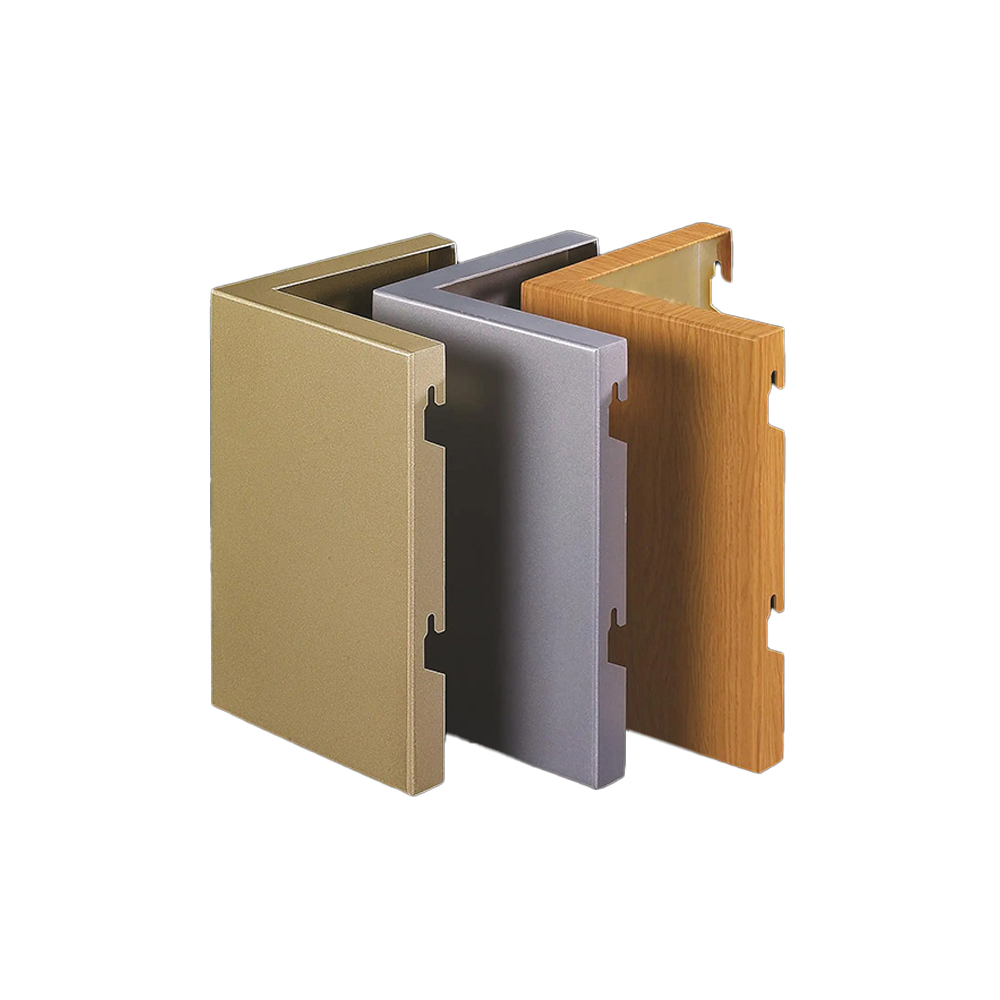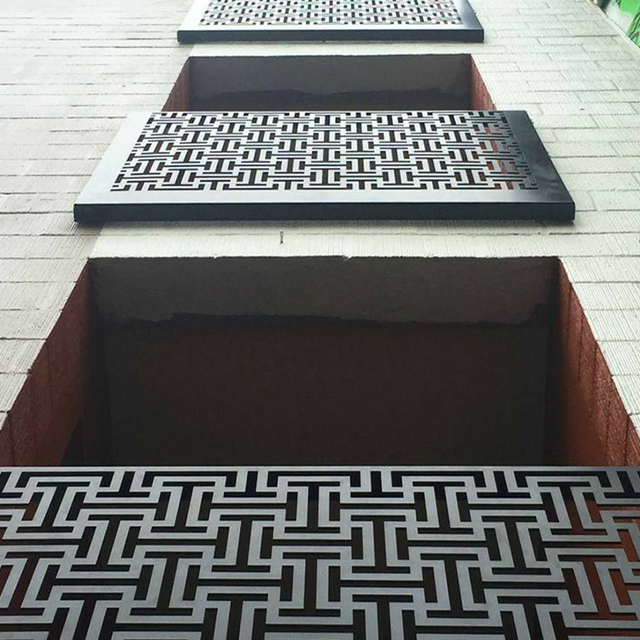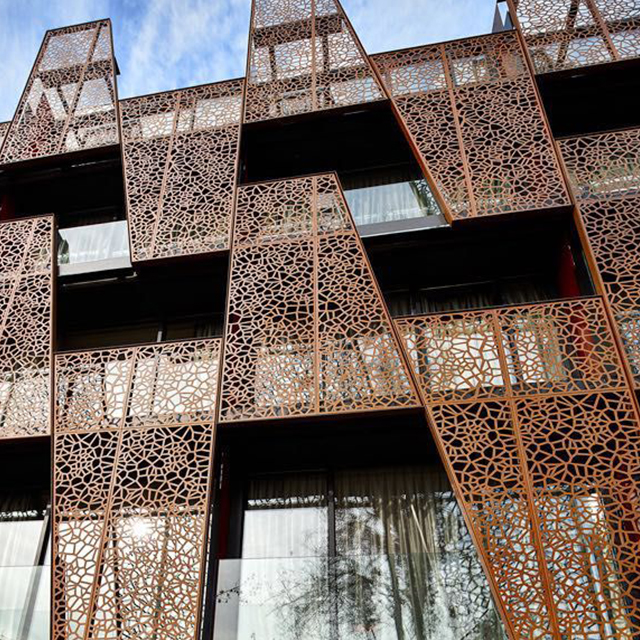Types and Characteristics of Aluminum Veneer: Unveiling a Versatile Cladding Solution
In the realm of modern architecture, aluminum veneer has emerged as a frontrunner for cladding facades, captivating architects, engineers, and building owners alike with its unique blend of aesthetics, durability, and versatility. These lightweight, corrosion-resistant panels offer a myriad of benefits that make them a compelling choice for a wide range of structures. Understanding the different types and characteristics of aluminum veneer empowers architects, engineers, and building owners to select the most suitable option for their specific project requirements.

Delving into the Types of Aluminum Veneer
- Solid Aluminum Veneer: Solid aluminum veneer panels are composed of a single layer of aluminum, typically ranging from 2 to 4 millimeters in thickness. They offer a clean, minimalist aesthetic and are well-suited for applications where a smooth, uniform appearance is desired. Solid aluminum veneer is available in a wide range of colors and finishes, allowing for customization to match diverse architectural styles.
- Perforated Aluminum Veneer: Perforated aluminum veneer features a pattern of holes or cutouts throughout the panel surface. These perforations can provide a variety of aesthetic and functional benefits, such as reducing solar heat gain, enhancing ventilation, and creating unique lighting effects. Perforated aluminum veneer is often used to create visually striking facades that add depth and dimension to the building’s exterior.
- Honeycomb Aluminum Veneer: Honeycomb aluminum veneer is composed of two thin layers of aluminum bonded to a honeycomb core made of aluminum or plastic. This construction provides exceptional strength and rigidity while maintaining a lightweight profile. Honeycomb aluminum veneer is an ideal choice for applications requiring high structural performance, such as large-scale facades or buildings in areas prone to strong winds or seismic activity.
- Anodized Aluminum Veneer: Anodized aluminum veneer undergoes an electrochemical process that creates a protective oxide layer on the metal surface. This layer enhances the panel’s resistance to corrosion, abrasion, and UV radiation. Anodized aluminum veneer is available in a variety of colors and finishes, including metallic, matte, and satin.
- Powder-Coated Aluminum Veneer: Powder-coated aluminum veneer is coated with a layer of dry powder paint that is electrostatically charged and then baked onto the panel surface. This process creates a durable, weather-resistant finish that is available in a wide range of colors and textures. Powder-coated aluminum veneer is a popular choice for applications requiring a high-quality, long-lasting finish.
Exploring the Characteristics of Aluminum Veneer
- Durability: Aluminum veneer is renowned for its exceptional durability, withstanding harsh weather conditions, corrosion, UV radiation, and extreme temperatures. This resilience translates into long-lasting facades that require minimal maintenance, ensuring the building’s exterior retains its aesthetic appeal and structural integrity for decades.
- Lightweight Construction: Aluminum is one of the lightest metals commonly used in construction, making aluminum veneer panels significantly lighter than traditional materials like brick or concrete. This lightweight construction reduces the overall weight of the building, minimizing structural requirements and potentially leading to cost savings in foundation and framing.
- Aesthetics and Design Flexibility: Aluminum veneer offers a vast array of aesthetic options, with a wide range of colors, finishes, and textures to complement diverse architectural styles. Its versatility allows architects and designers to create visually striking and unique facades that align with the overall aesthetic vision for the building.
- Energy Efficiency: Aluminum veneer can contribute to a building’s energy efficiency by incorporating insulation materials within the panel structure. This insulation helps regulate interior temperatures, reducing energy consumption and lowering heating and cooling costs, particularly in extreme climates.
- Fire Resistance: Aluminum veneer can be designed to meet stringent fire safety standards, providing a protective barrier against fire and smoke penetration. This fire resistance is crucial for ensuring the safety of occupants and the integrity of buildings, especially in high-rise structures or those with high fire hazard occupancy.
- Sustainability: Aluminum is a highly recyclable material, aligning with environmentally conscious building practices. Its long lifespan further reduces its environmental impact, as it minimizes the need for frequent replacements and associated waste generation.
- Ease of Installation: Aluminum veneer panels are typically prefabricated and modular, streamlining the installation process and reducing construction time. This can lead to cost savings and project completion within shorter timelines, particularly for large-scale projects.
- Low Maintenance Requirements: Aluminum veneer requires minimal upkeep, typically involving occasional cleaning and inspections. This low-maintenance nature contributes to reduced lifecycle costs and hassle-free building management, ensuring the building’s exterior remains aesthetically pleasing and structurally sound for years to come.
Conclusion
Aluminum veneer, with its diverse types, exceptional characteristics, and wide range of benefits, has established itself as a frontrunner in cladding solutions for modern architecture. Its versatility, durability, aesthetics, and sustainability make it an ideal choice


